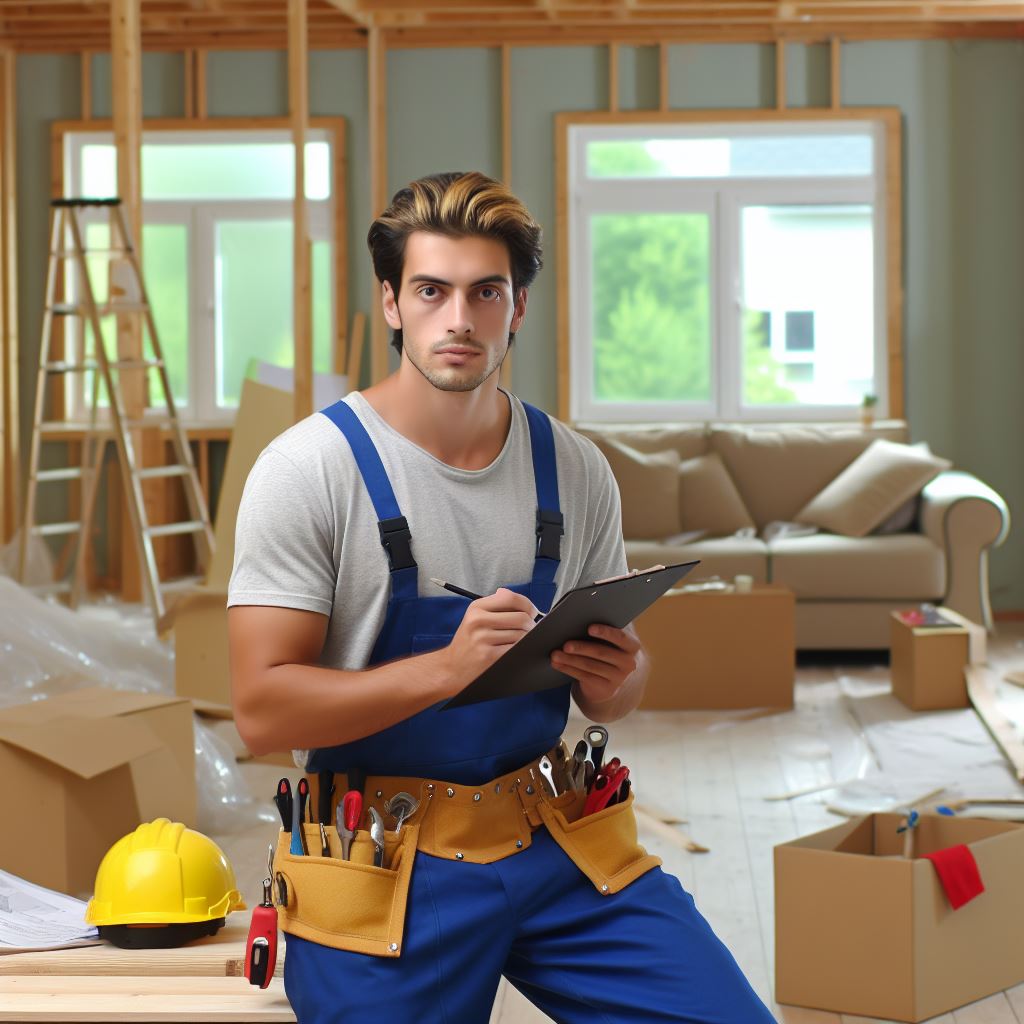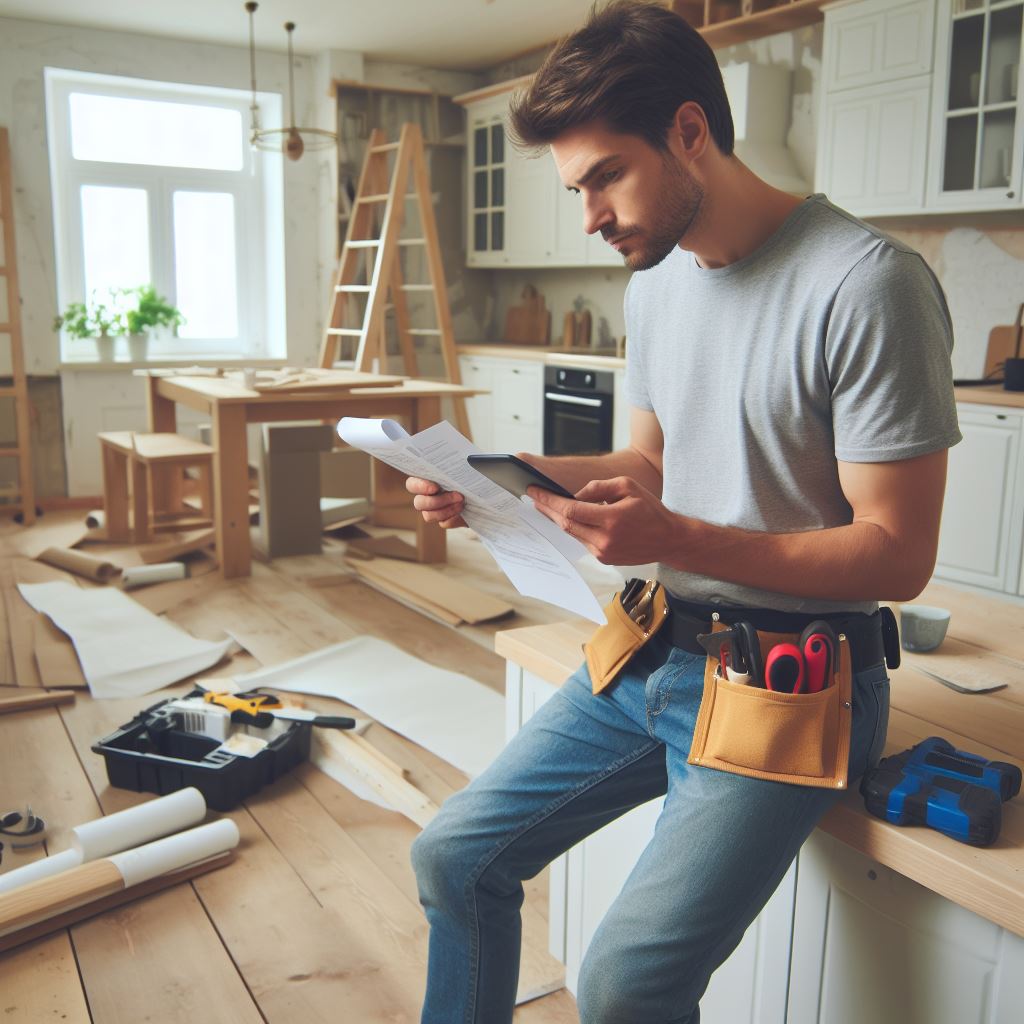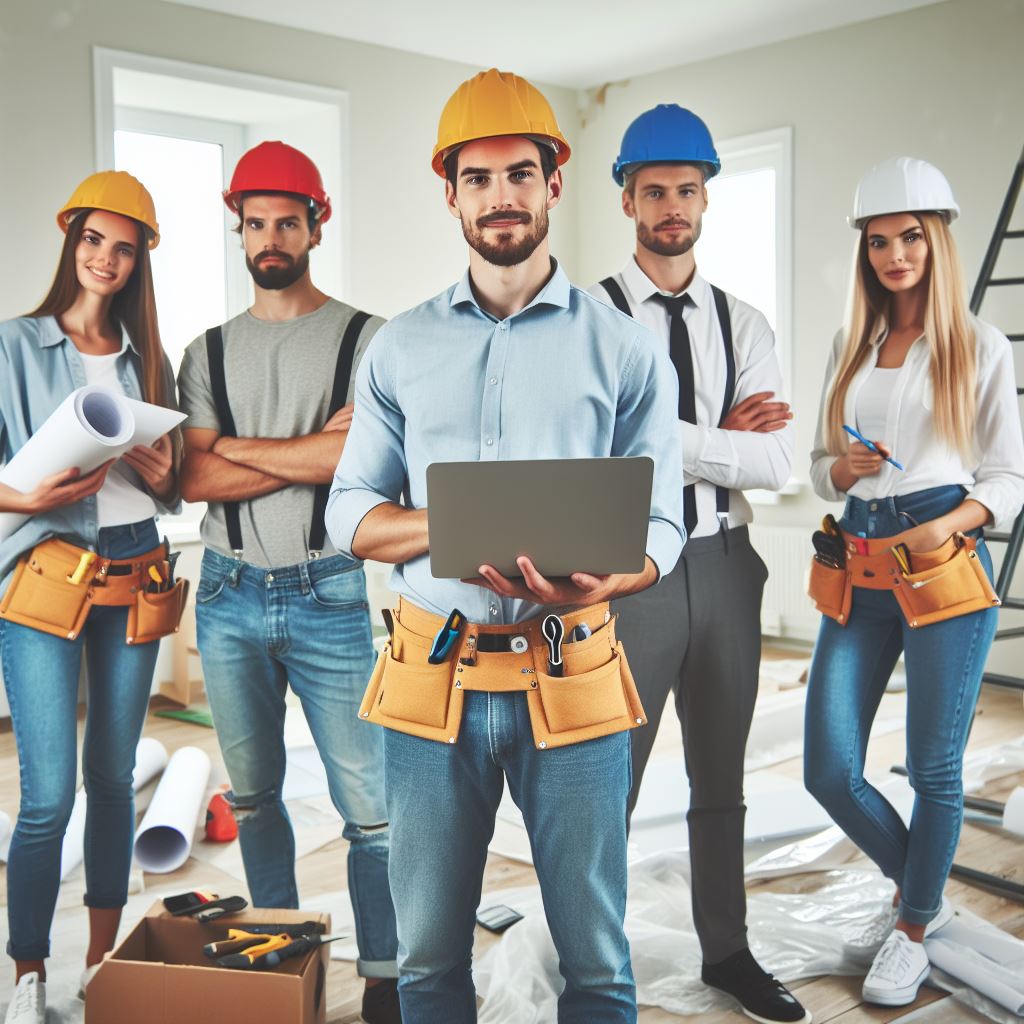Introduction
In today’s rental market, upgrading rental properties is more important than ever.
Not only does it increase the value of the property, but it also attracts high-quality tenants.
For landlords, upgrading rental properties means higher rental rates and lower turnover rates.
With modern amenities and updated features, tenants are willing to pay a premium.
Tenants also benefit from upgraded rental properties.
They get to enjoy a more comfortable and convenient living environment, making their rental experience more enjoyable.
Additionally, upgraded rental properties often come with energy-efficient appliances and fixtures, resulting in lower utility bills for tenants.
Key Areas to Upgrade
- Kitchens: Upgrading kitchen appliances, countertops, and cabinets can significantly enhance the overall appeal of a property.
- Bathrooms: Updating fixtures, adding storage space, and improving the overall functionality of bathrooms can make a big difference.
- Flooring: Replacing old, worn-out flooring with newer options like hardwood or laminate can instantly rejuvenate a space.
- Lighting: Upgrading lighting fixtures can help brighten spaces and create a more welcoming atmosphere.
- Exterior: Enhancing curb appeal through landscaping, repainting, and improving outdoor spaces can attract more tenants.
Cost-Effective Upgrades
- Paint: A fresh coat of paint can transform a rental property and give it a clean, updated look without breaking the bank.
- Fixtures and Hardware: Replacing outdated fixtures and hardware can make a significant impact on the overall aesthetic of the property.
- Window Coverings: Installing modern, energy-efficient window coverings can enhance the property’s look while providing insulation.
- Storage Solutions: Adding storage options, such as shelves or cabinets, can maximize space and appeal to potential tenants.
- Landscaping: Maintaining a neat and well-groomed outdoor area can increase the property’s curb appeal without major expenses.
Basically, upgrading rental properties is crucial for both landlords and tenants.
It improves the property’s value, attracts high-quality tenants, and provides a better rental experience overall.
Understanding the Target Market
A successful rental property business relies on a deep understanding of the target market.
By identifying the specific needs and preferences of potential tenants, property owners can make informed decisions about property upgrades that will attract and retain tenants.
Here’s how you can understand your target market and cater to their demands:
Identify the target market for rental properties
- Begin by analyzing the location and type of property to determine the most likely target market.
- Consider factors such as demographics, income levels, and lifestyle preferences of potential tenants.
- Research the local rental market to understand the demand for certain types of properties.
- Create tenant profiles based on your findings to better understand the target market.
Importance of understanding the demographic and preferences of the target market
- Knowing the demographic makeup of your target market allows you to tailor your property upgrades accordingly.
- Demographics can include age, family size, income level, occupation, and lifestyle choices.
- Preferences such as amenities, location, and design styles can significantly impact tenant decisions.
- Understanding these factors helps you make informed decisions about upgrades that will attract your target market.
Tips for identifying the target market’s needs and wants regarding property upgrades
- Conduct surveys and interviews with current tenants to gather feedback on the property and potential improvements.
- Use online platforms and social media to engage with your target market and gather insights on their preferences.
- Visit similar rental properties in the area to see what upgrades have been successful in attracting tenants.
- Consider working with a market research firm to gain more in-depth insights into the target market’s needs.
Once you have a clear understanding of your target market’s preferences and needs, you can plan property upgrades that will make your rental property more appealing.
Here are some ideas that have proven to be successful:
- Upgrade the kitchen and bathroom with modern fixtures, energy-efficient appliances, and stylish design elements.
- Invest in high-speed internet and cable TV packages to appeal to tech-savvy tenants.
- Create functional outdoor spaces such as patios or balconies to attract those who enjoy outdoor living.
- Consider adding additional storage space, such as built-in closets or shelving, to maximize convenience.
- Install energy-efficient features, such as LED lighting and smart thermostats, to reduce utility costs for tenants.
Remember to always consider your budget and the potential return on investment when planning property upgrades.
By understanding your target market and catering to their needs, you can attract and retain quality tenants who will value your property and contribute to the success of your rental business.
Read: Revitalizing Rural Real Estate
Essential Upgrades for Rental Properties
The Importance of Making Functional Upgrades First
When upgrading rental properties, it is crucial to prioritize functional improvements such as electrical, plumbing, and HVAC systems.
These essential upgrades ensure that the property meets necessary safety standards and provides tenants with a comfortable living environment.
By addressing functional upgrades first, landlords can mitigate potential issues and reduce future maintenance costs.
Neglecting these upgrades can lead to unhappy tenants and a higher turnover rate, resulting in financial losses for property owners.
Aesthetic Upgrades That Attract Tenants
Aside from functional upgrades, landlords should also consider aesthetic improvements to attract potential tenants.
One of the most effective and cost-efficient ways to enhance a rental property’s appeal is by giving it a fresh coat of paint.
A new paint job can instantly refresh the look of the property and make it more appealing to prospective renters.
Updated flooring, such as installing hardwood or replacing worn-out carpets, can greatly improve the overall appearance and value of the rental property.
Another aspect to consider is updating fixtures. Modern fixtures in the kitchen and bathroom can give the property a more contemporary and luxurious feel.
Cost-Effective Ways to Improve Curb Appeal
First impressions matter, so it’s important to invest in cost-effective ways to enhance the curb appeal of rental properties.
Simple upgrades like landscaping can significantly improve the property’s appearance and attract potential tenants.
Adding colorful flowers, trimming the lawn, and investing in outdoor lighting can create a welcoming atmosphere.
Another tip is to pressure wash the exterior, which can remove dirt, grime, and stains, instantly freshening up the property.
Additionally, repairing or replacing a worn-out front door and adding a new mailbox can make a big difference in the property’s curb appeal.
Lastly, ensuring that the property’s address numbers are clearly visible and well-maintained can improve its overall aesthetics.
The Benefits of Upgrading Rental Properties
Investing in functional and aesthetic upgrades for rental properties can yield numerous benefits for landlords.
Functional upgrades improve the property’s safety, reliability, and overall value, attracting responsible and long-term tenants.
Aesthetic improvements, on the other hand, make the rental property more visually appealing, increasing its marketability and potential rental income.
By creating a more pleasant and comfortable living environment, landlords can improve tenant satisfaction and reduce turnover rates.
Ultimately, a well-maintained and upgraded rental property can lead to higher rental demand and increased profitability for property owners.
In fact, when upgrading rental properties, it is essential to prioritize functional upgrades that ensure safety and comfort.
Electrical, plumbing, and HVAC systems should be addressed first.
Aesthetic upgrades like fresh paint, updated flooring, and modern fixtures can also attract tenants.
Cost-effective curb appeal improvements, such as landscaping and pressure washing, can make a significant difference.
By investing in these upgrades, landlords can reap the benefits of higher rental demand, increased profitability, and tenant satisfaction.
Read: Waterfront Development: Pros & Cons
Energy Efficiency Upgrades
In the ever-evolving landscape of rental properties, focusing on energy efficiency is no longer just a choice; it’s a strategic imperative.
This section delves into the essential aspects of energy efficiency upgrades that not only benefit property owners but also contribute to a sustainable future.
The Importance of Energy Efficiency for Rental Properties
Why is energy efficiency crucial in the realm of rental properties?
Beyond the obvious environmental benefits, it significantly impacts the bottom line for both property owners and tenants.
Reduced utility costs translate into higher returns for property owners, while tenants enjoy lower energy bills.
The emphasis here is on the dual advantage that energy efficiency provides—economic savings and environmental responsibility.
As a property owner, investing in energy efficiency isn’t just a forward-thinking move; it’s a commitment to creating a win-win situation for all stakeholders.
Cost-Effective Energy-Saving Upgrades: LED Lighting and Programmable Thermostats
Small changes can yield significant results. LED lighting stands out as a prime example of a cost-effective, energy-saving upgrade.
These bulbs not only consume less electricity but also have a longer lifespan, reducing maintenance hassles for property owners.
Programmable thermostats take energy efficiency a step further.
By intelligently adapting to tenants’ schedules, they optimize heating and cooling, ensuring energy is not wasted when it’s not needed.
This section encourages property owners to embrace these practical, yet impactful, upgrades, emphasizing the immediate and long-term benefits they bring to the table.
Tax Incentives and Rebates for Energy-Efficient Upgrades
The financial aspect of energy efficiency upgrades is a powerful motivator. Governments recognize and reward property owners for investing in sustainability.
This subheading outlines the potential financial gains through tax incentives and rebates.
By making energy-efficient choices, property owners can qualify for tax credits, reducing their overall tax burden.
Furthermore, the availability of state and local incentives, such as cash rebates, adds an extra layer of appeal.
By tapping into these programs, property owners not only contribute to a greener planet but also enjoy immediate financial perks, making the decision to go green a sound financial strategy.
Read: Building Codes: 2024 Key Changes

Landscaping and Outdoor Upgrades
The Impact of Outdoor Spaces on Rental Properties
Having well-maintained outdoor spaces can greatly enhance the appeal and value of rental properties.
Outdoor areas often serve as an extension of living space for tenants, providing relaxation and entertainment opportunities.
By creating attractive and functional outdoor spaces, landlords can attract more tenants and justify higher rental prices.
Tips for Improving Curb Appeal through Landscaping
Adding Low-Maintenance Plants
- Incorporating plants is an effective way to add color and vibrancy to outdoor areas.
- Opt for low-maintenance plants that require less watering and upkeep, such as succulents or native plants.
- This ensures that the landscaping remains attractive without requiring excessive effort or costs.
Defining Walkways
- Clearly defined walkways offer a sense of structure and purpose to outdoor spaces.
- Use materials like pavers, gravel, or steppingstones to create paths that guide tenants and guests through the garden.
- It not only adds visual appeal but also enhances safety and functionality.
Installing Outdoor Seating and Entertainment Areas
- Outdoor seating and entertainment areas provide tenants with additional usable spaces for relaxation and socialization.
- Consider adding features like comfortable seating, dining tables, grilling stations, or fire pits.
- These amenities not only elevate the property’s appeal but also create opportunities for tenants to enjoy the outdoors.
Incorporating Lighting
- Proper lighting can significantly enhance the ambiance and safety of outdoor spaces.
- Install strategic lighting fixtures to highlight walkways, focal points, and landscaping features.
- Additionally, consider adding LED lights or solar-powered fixtures to promote energy efficiency and lower maintenance costs.
Creating Privacy
- Privacy is an important consideration for outdoor spaces.
- Utilize fences, hedges, or trellises to create secluded areas where tenants can relax or host gatherings.
- By providing privacy, tenants will feel more comfortable using and enjoying the outdoor spaces.
Implementing Irrigation Systems
- Reliable irrigation systems are essential for maintaining healthy and attractive landscaping.
- Consider installing an automatic irrigation system that delivers the right amount of water to plants.
- This helps to minimize water wastage and ensures that plants thrive while reducing the need for manual watering.
Regular Maintenance
- Keeping outdoor areas well-maintained is crucial to preserve their appeal.
- Regularly mow lawns, trim bushes, and remove weeds to maintain a tidy appearance.
- Routine maintenance also prevents overgrowth and keeps the landscaping looking fresh and inviting.
In general, landscaping and outdoor upgrades play a significant role in enhancing the appeal and value of rental properties.
By carefully selecting low-maintenance plants, defining walkways, adding seating areas, incorporating lighting, creating privacy, implementing irrigation systems, and committing to regular maintenance, landlords can transform their outdoor spaces into inviting and desirable features.
These improvements will attract more tenants and justify higher rental prices, ultimately leading to increased profitability and tenant satisfaction.
Read: The Future of Mixed-Use Properties
Technology Upgrades
The Value of Technology Upgrades in Rental Properties
Technology upgrades are essential in rental properties as they enhance convenience, security, and overall tenant satisfaction.
These improvements also attract potential renters looking for modern amenities.
Adding Smart Home Devices for Convenience and Security
In today’s digital age, incorporating smart home devices in rental properties is a smart move.
These devices not only provide convenience but also enhance security measures.
Smart Door Locks, Security Cameras, and Thermostats
Installing smart door locks allows tenants to easily lock and unlock their doors through their smartphones or keypads, eliminating the need for traditional keys.
Additionally, security cameras offer increased surveillance and deterrents against potential intruders.
Thermostats equipped with smart technology help tenants regulate the temperature of their homes efficiently and remotely.
The Importance of Reliable and Fast Internet Connections
In today’s connected world, a reliable and fast internet connection is a necessity for most tenants. It has become an essential utility alongside electricity and water.
Fast internet speeds ensure smooth streaming, uninterrupted work from home, and seamless communication.
To provide this amenity in rental properties, landlords should consider upgrading their internet infrastructure to meet the demands of multiple tenants.
Upgrading Internet Infrastructure
To ensure reliable and fast internet connections, landlords should work with reputable internet service providers and consider investing in fiber optic connections.
These connections offer high-speed internet access and accommodate increasing bandwidth demands.
Providing Wi-Fi Coverage in Common Areas
In addition to having individual Wi-Fi routers in each unit, landlords can also consider providing Wi-Fi coverage in common areas.
This enables tenants to stay connected even when they are outside their units, encouraging tenant interaction and satisfaction.
Offering Internet Packages
Considering different tenants’ internet needs, landlords can offer various internet packages to meet their requirements.
This may include options for different speeds or data caps, allowing tenants to choose the package that suits their usage patterns and budgets.
Utilizing Smart Home Hubs
Integrating smart home hubs can provide centralized control of various smart devices and internet connectivity.
This ensures streamlined management, simplifying tenant access and troubleshooting for landlords.
Overall, implementing technology upgrades in rental properties not only enhances tenant experience but also increases the property’s value and attracts a broader range of potential renters.
From smart home devices to reliable internet connections, these upgrades are worth considering for landlords looking to stay competitive in the rental market.
Budgeting and Return on Investment
Tips for Budgeting Property Upgrades
- Prioritize upgrades based on immediate needs and potential returns.
- Research the cost of materials, labor, and permits to create a realistic budget.
- Get multiple quotes from contractors to compare prices and negotiate more effectively.
- Allocate extra funds for unexpected expenses or contingencies that may arise during the project.
- Consider DIY options for minor upgrades to save on labor costs.
- Take advantage of discounts, sales, or incentives offered by suppliers or manufacturers.
- Set a strict budget and stick to it, avoiding any unnecessary expenses that can exceed your planned costs.
Importance of Calculating Return on Investment for each Upgrade
- ROI calculation helps determine the profitability and viability of each upgrade.
- It allows property owners to prioritize upgrades with higher returns over those with lower returns.
- Knowing the ROI helps in making informed decisions about investing in upgrades or alternative investments.
- It ensures that upgrades will add value to the property and attract potential tenants or buyers.
- ROI calculation provides a clear financial outlook to assess the overall impact of the upgrade.
Considering Long-Term Savings and Potential Rental Income Increases
- Evaluate potential long-term savings by investing in energy-efficient upgrades.
- Upgrades like insulation, LED lighting, or solar panels can lower utility bills and attract eco-conscious tenants.
- Calculate the potential increase in rental income based on market demand and the added value of the upgrades.
- Factors such as location, target market, and property type should be considered when estimating rental income growth.
- Consult with real estate professionals or property managers to get accurate insights into potential rental income increases.
- Taking into account both long-term savings and rental income increases will give a comprehensive picture of the returns.
In a nutshell, budgeting property upgrades plays a crucial role in maximizing the return on investment.
By following these tips, property owners can effectively manage their budget, prioritize upgrades with higher returns, and make informed decisions.
Considering long-term savings and potential rental income increases further enhances the overall ROI.
Remember, careful planning and evaluation are essential to ensure that each upgrade contributes to the overall value and profitability of your rental property.
Conclusion
Recap of the Importance of Upgrading Rental Properties
Upgrading rental properties is not just a choice; it’s a strategic necessity.
Tenants crave modern amenities, and property upgrades ensure increased tenant satisfaction.
Landlords must realize the direct link between property condition and tenant retention.
Upgrades not only attract new tenants but also retain existing ones, fostering long-term stability.
Efficient property management requires a proactive approach. Stay ahead by regularly assessing tenant needs and market trends.
An upgraded property ensures a competitive edge in the rental market.
Encouraging Landlords to Stay Informed about Evolving Trends
The rental market is dynamic, shaped by ever-changing trends and tenant preferences.
Landlords should actively engage in market research to stay ahead of evolving demands.
By staying informed, landlords can identify popular upgrades that enhance property value.
Smart technologies, energy efficiency, and stylish designs are key areas to explore. Adaptability to market trends is crucial for sustained success.
Successful landlords are those who anticipate tenant needs. Regularly survey tenants to understand their preferences and expectations.
Proactive upgrades not only attract tenants but also build a positive reputation, increasing demand.
Emphasizing the Win-Win Situation of Attractive, Well-Maintained Properties
Upgraded rental properties create a win-win situation for both landlords and tenants.
Landlords enjoy increased property value, higher rental income, and reduced vacancy rates.
Well-maintained properties elevate the tenant experience, leading to better relationships and positive reviews.
Satisfied tenants are more likely to renew leases, minimizing turnover costs for landlords.
Investing in property upgrades is an investment in the rental business’s long-term success.
It’s a symbiotic relationship where landlords meet tenant expectations, and tenants reward with loyalty.
In the competitive rental market, upgrading is not just an option but a strategic imperative for sustained prosperity.




